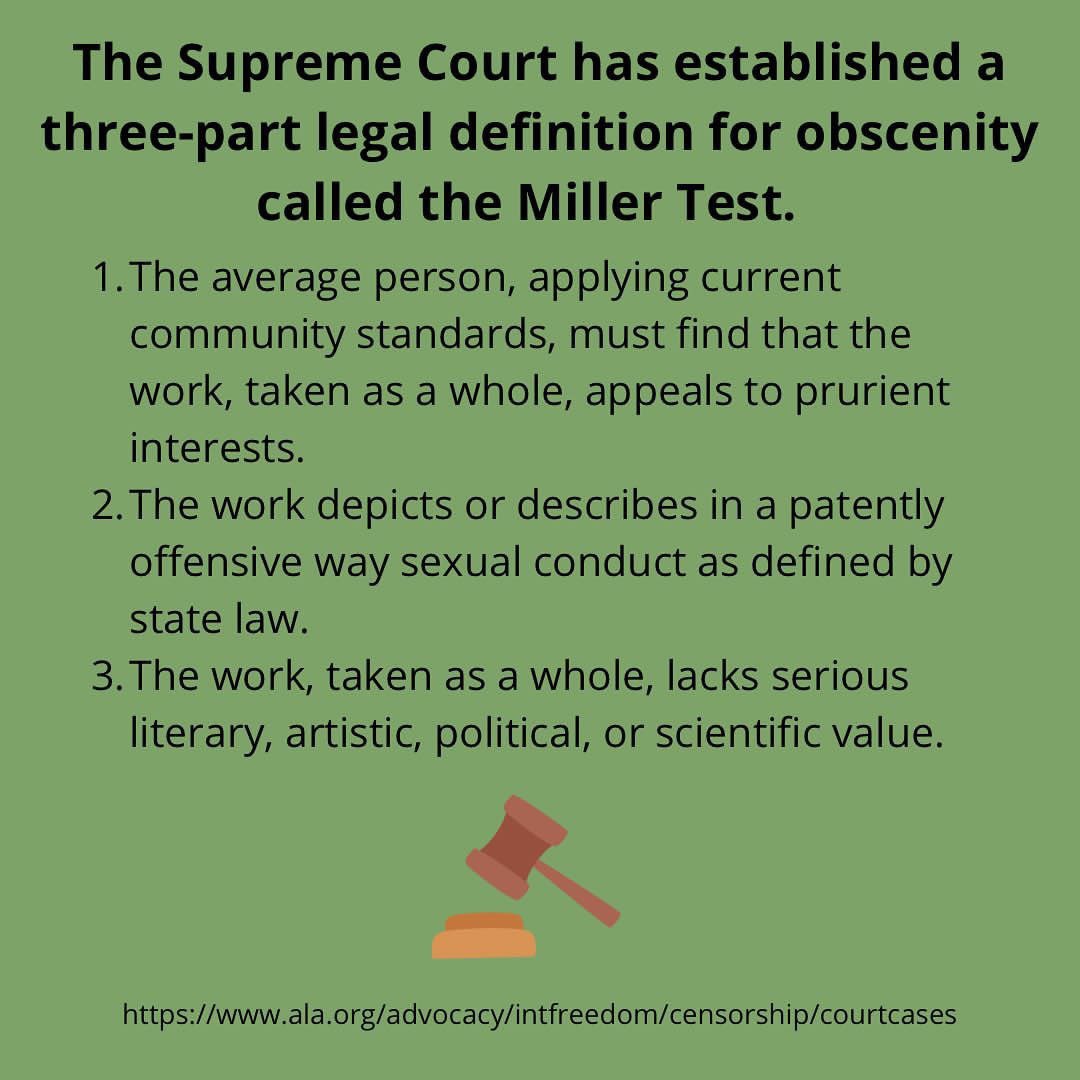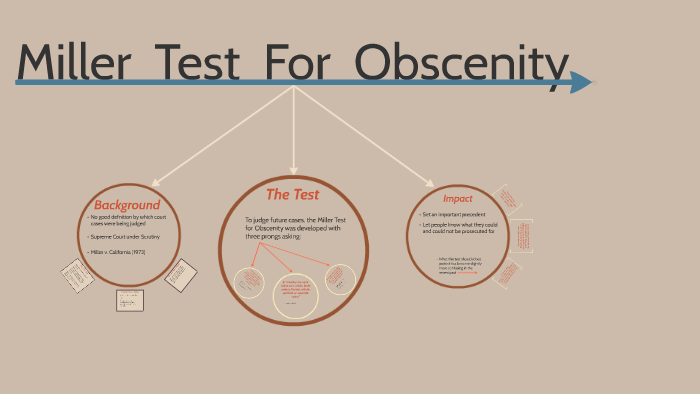miller test
The Miller Test, formally known as the three-prong obscenity test, is a legal standard established by the United States Supreme Court in the 1973 case Miller v. California. This test is used to determine whether speech or expression qualifies as obscene, and therefore not protected by the First Amendment.
The Miller Test consists of three criteria that must be met for material to be classified as obscene:
- Community Standards: The work, when viewed in its entirety, must appeal to the prurient interest according to the standards of the average person in the community.
- Explicitness: The work depicts or describes, in a patently offensive way, sexual conduct specifically defined by applicable state law.
- Lack of Value: The work must lack serious literary, artistic, political, or scientific value when considered as a whole.
In summary, for material to be deemed obscene under the Miller Test, it must satisfy all three prongs, meaning that it must provoke a sexual response according to community norms, showcase offensive sexual conduct, and lack any substantial value (Wikipedia; First Amendment Encyclopedia; LII / Legal Information Institute).
Understanding the Miller Test is essential as it plays a significant role in the interpretation of obscenity laws in the United States, guiding the decisions of judges and juries in obscenity cases (TestMax; Justice.gov; Study.com).
Sources


Related Questions
Work fast from anywhere
Stay up to date and move work forward with BrutusAI on macOS/iOS/web & android. Download the app today.
